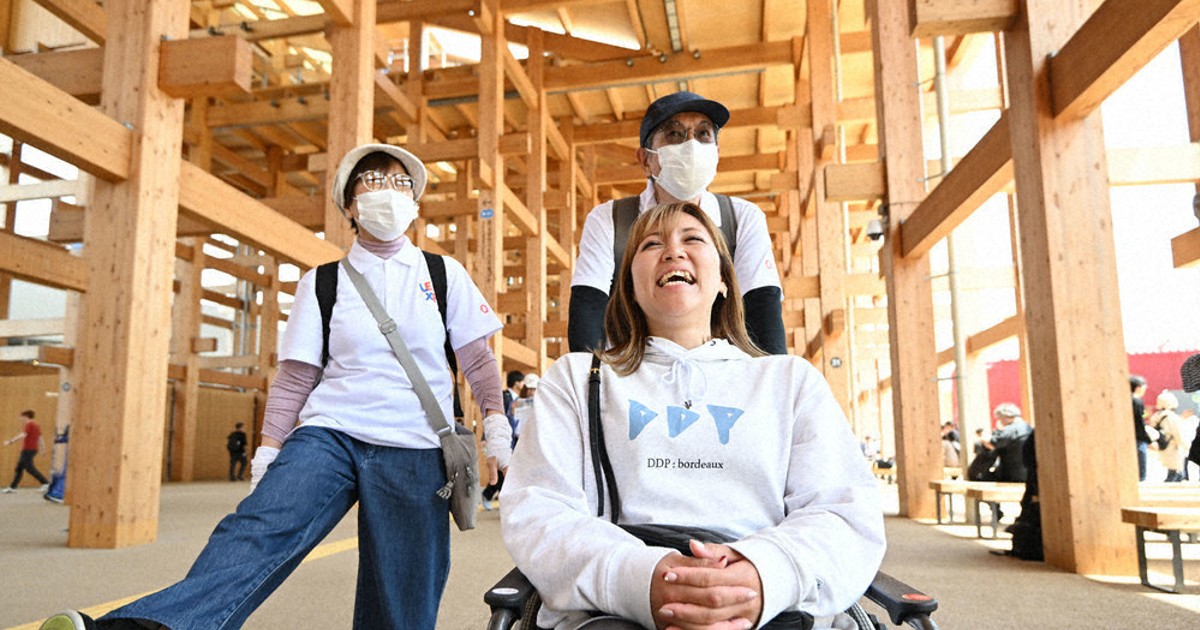Enjoy EXPO: Wheelchair User Inclusion – A Step Towards Accessibility
Making EXPO 2023 a Truly Inclusive Experience for Wheelchair Users
The much-anticipated EXPO 2023 is upon us, and while the excitement is palpable, ensuring accessibility for all attendees is paramount. This article delves into the crucial aspect of wheelchair user inclusion at EXPO 2023, highlighting both successes and areas for future improvement. We'll explore the practical considerations, advocate for better accessibility standards, and celebrate the progress made in creating a more welcoming environment for visitors with disabilities.
Accessible Infrastructure: A Foundation for Inclusion
A truly inclusive EXPO necessitates robust accessible infrastructure. This includes:
- Ramp Access: Sufficiently sloped ramps, free from obstructions, are essential for navigating the various pavilions and outdoor spaces. The smooth functionality of these ramps needs to be consistently maintained throughout the duration of the EXPO.
- Wide Pathways: Clear and spacious pathways are vital for wheelchair users, particularly during peak hours. This prevents congestion and ensures safe passage.
- Accessible Restrooms: Well-maintained and appropriately sized accessible restrooms, strategically located throughout the EXPO grounds, are critical. This includes consideration for companion care needs.
- Designated Parking: Ample and conveniently located designated parking spaces for wheelchair users, close to entrances, are crucial for ease of access. Clear signage directing wheelchair users to these areas is essential.
- Lift Access: Elevators and lifts must be readily available and functional in all buildings to ensure vertical accessibility within pavilions and other structures. Regular maintenance and emergency procedures should be in place.
Beyond the Basics: Enhancing the EXPO Experience
Beyond the fundamental aspects of accessible infrastructure, EXPO 2023 needs to consider:
- Signage and Wayfinding: Clear, easy-to-read signage, incorporating tactile elements for visually impaired visitors, is necessary for intuitive navigation. Digital wayfinding solutions and mobile apps with accessible features can enhance the experience.
- Assistive Technology: The availability of assistive technology, such as wheelchairs, scooters, and communication devices, should be readily accessible and potentially offered as a rental service.
- Staff Training: Thorough training for EXPO staff on disability awareness and how to provide assistance to wheelchair users is crucial for a positive and supportive environment. This includes knowing how to respond to requests for help appropriately and efficiently.
- Sensory Considerations: EXPO organizers should consider the sensory needs of wheelchair users, minimizing overwhelming stimuli and providing quiet zones where needed. This promotes a comfortable and enjoyable experience for all attendees.
Celebrating Progress, Advocating for Improvement
While progress has undoubtedly been made in ensuring wheelchair user inclusion at EXPO 2023, there's always room for improvement. We must strive to create an experience that is not just accessible, but truly welcoming and enjoyable for everyone. This requires ongoing dialogue with disability advocates, regular audits of accessible facilities, and a commitment to continuous improvement.
Looking Ahead: Setting a Higher Standard
The lessons learned from EXPO 2023 in terms of wheelchair user inclusion should inform future events and inspire better accessibility standards across all public spaces. By embracing universal design principles and actively prioritizing accessibility, we can create a more inclusive and equitable world for all.
Call to Action: Share your experiences and thoughts on wheelchair accessibility at EXPO 2023 using #EXPOAccessibility on social media. Let's continue the conversation and advocate for a more inclusive future.
